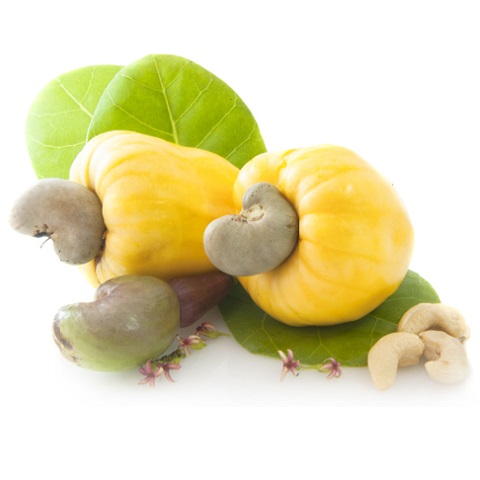- Home
- Crop Knowledge
- Fruits
- Cashew
Cashew
- Nutrients
- Common Pests
- Crop Selection
- Documents
|
Crop Stage Images |
 |
 |
 |
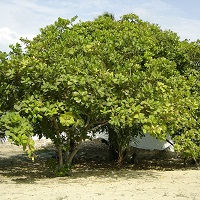 |
 |
|
|---|---|---|---|---|---|---|
| Age of the Tree | 1 Year | 2 Year | 3 Year | 4 Year | 5 Year and Above | |
|
Nutrients (gm/Tree) |
FYM(Kg) | 10 | 20 | 30 | 40 | 50 |
| N | 150 | 300 | 450 | 600 | 1200 | |
| P | 250 | 500 | 750 | 1000 | 1250 | |
| K | 100 | 200 | 300 | 400 | 500 | |
Deficiency of Nutrients:
| Nutrients | Nitrogen (N) | Phosphorus (P) | Potassium (K) | Calcium (Ca) |
|---|---|---|---|---|
| Nutrients Deficiency |  |
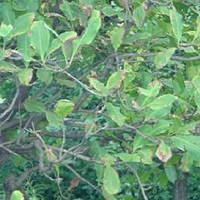 |
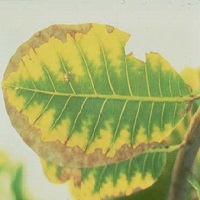 |
 |
| Deficiency Symptoms |
1. Deficiency symptoms of nitrogen always appear first in older leaves. 2. Stem becomes thin and growth stunted. Light sandy soils of the coastal region where cashew is mostly grown, lacks in organic matter and is poor in nitrogen content. Nitrogen availability is also intimately connected with the activity of soil microbes. 3. The leaves were also smaller. |
1. Phosphate deficiency results in stunted growth with dull-green foliage and by the fifth month, lower leaves of cashew seedlings wither and fall.
2. Phosphate application while planting in pits or localized in the root region, is more effective than surface application.
|
1. Marginal chlorosis occurs in older leaves.
2. Severe symptoms will leads to the whole leaf to become brown in colour. |
1. Ca-deficiency is more prevalent in high rainfall regions where leaching is excessive.
2. Cupping of young leaves with marginal scorching and death of growing points are due to Ca-deficiency, 3. The lime application also improves the K content of young leaves. |
| Nutrients | Sulphur (S) | Magnesium (Mg) | Iron (Fe) | Zinc (Zn) |
|---|---|---|---|---|
| Nutrients Deficiency | 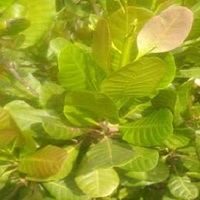 |
 |
 |
 |
| Deficiency Symptoms | 1. A sulfur deficient plant will experience yellowing or pale green colouring throughout the plant. Younger leaves suffer from chlorosis with their tips becoming necrotic.2. Overall plant development and growth will be stunted without enough sulfur in the soil. |
1. It is highly mobile and hence deficiency symptoms appear first in older leaves with interveinal chlorosis/necrosis and then progress to younger ones. 2. Magnesium deficiency occurs where calcium deficiency is also a problem and the deficiency also occurs by high potassium manuring. |
1. Chlorosis occurs in young leaves; young leaves seem to complete pale yellow in colour. | 1. Symptoms will appear in young leaves.
2. The occurrence of chlorosis in leaves. 3. Younger leaves become small. |
| Images Of Pest Life Cycle: | 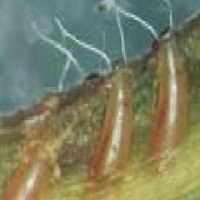 |
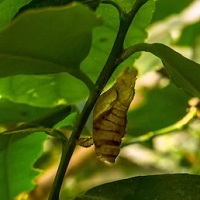 |
 |
|---|---|---|---|
| Stages: | Egg | Nymphs | Adult |
| Mark Of Identification: | Eggs are elongate and slightly curved with a pair of filaments. | Ant-like, hairy and amber coloured. | The adult is a reddish brown bug with a black head. |
| Life Cycle: | 7-8 Days. | 14-15 Days. | 9-10 Days. |
Management (Pest Control):
| Chemical: | 0.1 % carbaryl or 0.05% dimethoate flowering season for satisfactory control. |
|---|---|
| Organic: | 1st week of Dec (New leaf): 5gm or 5 ml/lit G Agro Beau of water. 250 ml G Agro PSB in 200 lit of water.
1st week of Jan (Flowering): 5ml or 5gm/lit G Agro Beau of water + Seaweed extract/ml/lit of water. 1st week of Feb (Fruit): 5ml or 5gm/lit G Agro Beau of water. |
| Images Of Pest Life Cycle: |  |
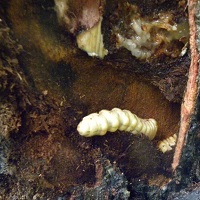 |
 |
 |
|---|---|---|---|---|
| Stages: | Egg | Larvae/Grub | Pupae | Adult |
| Mark Of Identification: | Eggs are whitish yellow in colour. | The grubs feed inside the tissues for 4-7 months. The grown-up grubs are off-white in colour. | Pupation occurs in a calcareous pupal chamber. | The adult is medium-sized. Reddish-brown longicorn beetle. |
| Life Cycle: | 4-7 Days. | 6-7 Months. | 60 Days. | 2-3 Weeks. |
Management (Pest Control):
| Chemical: | Swab the bark of the exposed roots and shoots with carbaryl 50 WP 2 g/L, lindane 20 EC 1 ml/L. Carry out root-feeding with monocrotophos (10 ml) + water (10 ml) in a small polythene bag twice a year on both sides of the trunk. Place carbofuran 3 G 5 g or inject 10 ml monocrotophos 36 SL and plug with mud to kill the grubs. |
|---|---|
| Organic: | Spray G Agro Beau 5gm/lit + G Agro Meta 5ml/lit 2 to 3 spray at 21 days interval. |
| Images Of Pest Life Cycle: |  |
 |
 |
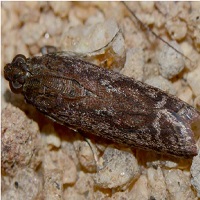 |
|---|---|---|---|---|
| Stages: | Egg | Larvae | Nymphs | Adult |
| Mark Of Identification: | Eggs are dark brown colored. | Small, slender, pinkish brown in colour with a black head and yellowish brown thoracic shield. | White in lightly brown in colour. | The adult is a medium-sized moth with dirty black fore-wings and pale dark hind wings. |
| Life Cycle: | 2-3 Days. | 14-16 Days. | 8-10 Days. | 12-58 Days. |
Management (Pest Control):
| Chemical: | Spraying of DDVP 0.05% at the time of fruiting. |
|---|---|
| Organic: | Spray G Agro Beau 5gm/lit + G Agro Meta 5ml/lit 2 to 3 spray at 21 days interval. |
| Seed Variety | Characteristics | Crop Yield (Kg/tree) |
|---|---|---|
| BPP-1 | 1. Nuts are medium in size with a net weight of 5 g and the shelling percentage of 27.5. 2. Kernel protein percentage is 19.8%. 3. This hybrid is withdrawn from a recommendation for cultivation. |
10 |
| BPP-2 | 1. The nuts are small with a net weight of 4 g and shelling percentage of 25.7. 2. The protein content of kernels is 21.3%. |
11 |
| BLA 39-4 (Madakkathara-1) | 1. The flowering season is from November to January. 2. The nuts are medium sized with 6.2g nut weight. 3. A shelling percentage is 26.8. Apple colour is yellow with a weight of 52g. 4. Reducing sugar content is 10.5%. |
13.8 |
| Ullal-1 | 1. The duration of harvest is long (about 110 days). 2. The nut weight is 6.7g with shelling percentage of 30.7%. 3. The colour of the apple is yellow. |
16 |
| Vengurla-1 | 1. The average percentage of perfect flowers is about 8%. 2. The nut weight is 6.2g with the shelling percentage of 31. 3. It is an early flowering variety. 4. Colour of the apple is yellow. |
19 |
| Vengurla-2 | 1. This selection has average perfect flower percentage of 8% and also has short flowering and fruiting phase. 2. Nuts are small with 4.3g nut weight and shelling percentage of 32. 3. Colour of apple is pinkish red. |
24 |
| Goa-1 (Balli-2) | 1. Nut weight of 7.6 g and the shelling percentage of 30.0. 2. Apple colour is yellow and with an average weight of 66.7 g. |
7 |

